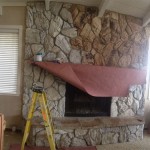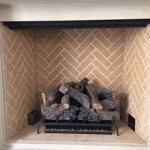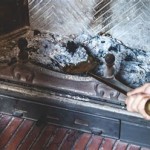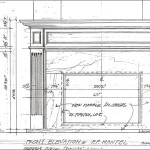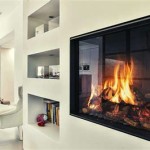Understanding Ventless Fireplace Fuel: A Comprehensive Guide
Ventless fireplaces, also known as vent-free fireplaces, offer a convenient and aesthetically pleasing alternative to traditional wood-burning fireplaces. These appliances rely on specialized fuels to produce heat and flames without requiring a chimney or external venting system. Understanding the different types of fuel available, their properties, and safety considerations is crucial for maximizing the benefits and ensuring the safe operation of a ventless fireplace.
The growing popularity of ventless fireplaces stems from their ease of installation, versatility in placement within a room, and relatively clean-burning performance. Unlike traditional fireplaces that require extensive structural modifications for venting, ventless models can often be installed directly against a wall or recessed into existing cabinetry. This flexibility makes them ideal for apartments, condominiums, and homes where traditional fireplace installation is impractical or impossible. However, their reliance on specific fuels necessitates a thorough understanding of fuel types and their implications.
Choosing the appropriate fuel for a ventless fireplace significantly influences its performance, the heat output, the aesthetics of the flame, and the overall safety of the unit. Incorrect fuel selection can lead to inefficient burning, unpleasant odors, potential damage to the fireplace, and even hazardous conditions. Therefore, a careful evaluation of the available options and adherence to manufacturer recommendations are paramount.
Fuel Options for Ventless Fireplaces
The primary fuels used in ventless fireplaces are liquid-based, mainly consisting of either denatured alcohol or gel-based fuels. Each type possesses distinct characteristics that influence its suitability for different fireplaces and user preferences.
Denatured Alcohol: Denatured alcohol, also known as methylated spirits, is ethanol (ethyl alcohol) that has been rendered unfit for human consumption by the addition of denaturants. These denaturants typically include substances like methanol or isopropyl alcohol, which alter the taste and smell, preventing its use as a beverage. The purpose of denaturing is to avoid alcohol beverage taxes while retaining its fuel properties.
When used in ventless fireplaces, denatured alcohol burns relatively cleanly, producing primarily carbon dioxide and water vapor. It is important to note that while the combustion is cleaner than burning wood, carbon monoxide can still be produced, especially in poorly ventilated spaces. Therefore, it is critical to ensure adequate ventilation, even with ventless fireplaces. Carbon monoxide detectors should always be installed and maintained in any home with a ventless fireplace.
The flame produced by denatured alcohol is typically more subtle and less vibrant compared to those generated by gel fuels. The heat output can vary depending on the specific denatured alcohol formulation and the design of the burner. Denatured alcohol is generally available in various container sizes and can be a cost-effective option for ventless fireplaces, depending on the frequency of use.
Gel-Based Fuels: Gel fuels consist of a mixture of alcohol, usually isopropyl or ethyl alcohol, and a gelling agent, such as cellulose or silica. The gelling agent thickens the alcohol into a viscous substance that burns slower and more controllably than liquid alcohol. This characteristic allows for the creation of visually appealing flames and often incorporates crackling sounds, simulating the atmosphere of a wood-burning fire.
Gel fuels are commonly packaged in individual cans or cartridges, making them convenient and easy to use. To operate a gel fuel fireplace, a user simply removes the lid from the can and ignites the gel with a long lighter or match. The cans are designed to be placed directly into the fireplace unit. The combustion process produces heat, carbon dioxide, and water vapor, similar to denatured alcohol. However, the exact composition and additives can vary among different brands, potentially affecting the emissions and odor produced.
Gel fuels often produce a more vibrant and realistic flame than denatured alcohol, making them a popular choice for those seeking ambiance. The heat output can be comparable to denatured alcohol, although it may also vary based on the formulation and quantity of gel used. The cost of gel fuels is generally higher than denatured alcohol, making it a potentially more expensive option for frequent users.
Factors Influencing Fuel Selection
Several factors play a significant role in determining the optimal fuel choice for a ventless fireplace. These factors include fireplace compatibility, desired aesthetics, safety considerations, and cost.
Fireplace Compatibility: The first and most crucial consideration is confirming the compatibility of the fuel with the specific ventless fireplace model. Fireplace manufacturers design their units to function optimally with certain types of fuels, and deviating from these recommendations can lead to damage, malfunction, or safety hazards. The user manual or the fireplace’s labeling should clearly state the approved fuel types. Using unapproved fuels can void the warranty and compromise the overall performance of the appliance.
For example, some fireplaces are specifically designed for liquid denatured alcohol, while others are intended exclusively for gel fuel cans. Attempting to use a liquid fuel in a fireplace designed for gel fuel can lead to spills, improper burning, and even a fire hazard. Conversely, using gel fuel in a fireplace designed for liquid fuel can result in incomplete combustion, soot buildup, and damage to the burner components. Therefore, adhering to the manufacturer's specifications is non-negotiable.
Aesthetics and Ambiance: The desired visual effect of the flame is another important factor. Gel fuels generally provide a more realistic and dramatic flame, often accompanied by crackling sounds that mimic a wood-burning fire. This makes them a popular choice for users who prioritize ambiance and visual appeal. Denatured alcohol, on the other hand, typically produces a cleaner, more subtle flame that may be preferred by those who prioritize functionality and minimalist aesthetics.
Those who want a visually appealing fire often want to purchase gel fuels. These fuels are available in a variety of different colors, and the flame can burn for a longer period of time than other fuels. It’s a good idea to shop around and see which fuel offers the best appearance and performance.
Safety Considerations: Safety is paramount when operating any type of fireplace, including ventless models. While ventless fireplaces eliminate the need for a chimney, they still produce combustion byproducts, including carbon dioxide and potentially carbon monoxide. Therefore, proper ventilation is essential to maintain air quality and prevent the buildup of harmful gases.
Regardless of the fuel type used, it is critical to install carbon monoxide detectors in the home and ensure they are functioning correctly. Regular maintenance of the fireplace, including cleaning the burner and surrounding areas, is also necessary to prevent soot buildup and ensure efficient combustion. Never leave a ventless fireplace unattended while it is burning, and keep flammable materials away from the appliance. Furthermore, fuels should be stored in a cool, dry place away from heat sources and out of reach of children and pets.
Cost and Availability: The cost and availability of different fuels can also influence the decision-making process. Denatured alcohol is generally less expensive than gel fuels, making it a more economical choice for those who frequently use their ventless fireplace. However, the cost of denatured alcohol can vary depending on the purity and the source of purchase.
Gel fuels, while more expensive, offer the convenience of pre-packaged cans and may be a better option for occasional users who prioritize ease of use. The availability of specific fuel types can also vary depending on the region and the retail outlets. It is advisable to compare prices from different suppliers and consider purchasing in bulk to potentially save money in the long run.
Safety and Handling Procedures
Regardless of the chosen fuel type, adherence to proper safety and handling procedures is essential to prevent accidents and ensure the safe operation of a ventless fireplace. Several key procedures must be followed at all times.
Storage: Fuel must always be stored in a cool, dry, well-ventilated area away from heat, sparks, open flames, and other sources of ignition. Keep containers tightly closed to prevent evaporation and spills. Store fuel out of reach of children and pets to prevent accidental ingestion or contact. The storage area should be clearly marked with appropriate warning labels to indicate the presence of flammable materials. Fire codes may have specific regulations on the maximum quantity of flammable liquids that can be stored in a residential dwelling. Consulting local fire regulations is advisable.
Refueling: Never refuel a ventless fireplace while it is hot or burning. Allow the unit to cool completely before adding more fuel. Refueling a hot fireplace can cause the fuel to ignite prematurely, resulting in a flash fire or explosion. Always use a funnel when pouring liquid fuel to prevent spills. If fuel is spilled, clean it up immediately with absorbent materials and ensure the area is thoroughly ventilated before igniting the fireplace.
Ignition: Use a long-reach lighter or match to ignite the fuel. Avoid using short matches or lighters, as they can pose a burn hazard. Keep your face and body away from the fireplace during ignition to avoid being burned by the flame. If the fireplace fails to ignite within a few seconds, turn off the fuel supply and allow the unit to ventilate before attempting to reignite it.
Ventilation: Even though ventless fireplaces do not require a chimney, adequate ventilation is still essential to prevent the buildup of carbon dioxide and carbon monoxide. Open a window or door slightly to allow fresh air to circulate in the room. Never operate a ventless fireplace in a small, enclosed space without adequate ventilation. Install carbon monoxide detectors in the home and test them regularly to ensure they are functioning correctly. If carbon monoxide levels rise, immediately evacuate the premises and contact emergency services.
Maintenance: Regular maintenance of the ventless fireplace is crucial for safe and efficient operation. Clean the burner and surrounding areas regularly to remove soot and debris. Inspect the fuel lines and connections for leaks. Replace any worn or damaged parts. Consult the manufacturer's instructions for specific maintenance recommendations. A properly maintained fireplace will burn more efficiently and safely, reducing the risk of malfunctions and accidents.
:max_bytes(150000):strip_icc()/ventless-gas-fireplaces-4160746-hero-f9d4bdcd9bd446eb84406de306f790ba.jpg?strip=all)
How To Pick Out A Ventless Gas Fireplace

What Is A Ventless Gas Fireplace Experts In Gaithersbutg Md

Ventless Gas Fireplace Propane

Considering A Ventless Gas Fireplace Here S What You Need To Know Bob Vila

Duluth Forge Dual Fuel Ventless Fireplace 32 000 Btu T Stat Control Nutmeg Finish 170165 The Home Depot

What Is A Ventless Gas Fireplace Dorr Oil

Empire Vail Premium 32 Slope Glaze Burner Vent Free Gas Fireplace Vf

Duluth Forge Dual Fuel Ventless Gas Fireplace Insert 32 000 Btu T Stat Control Model Fdf400t Zc 170111 The Home Depot

Duluth Forge 55 In Black Ventless Natural Or Liquid Propane Gas Fireplace The Fireplaces Department At Com

Can You Use Vent Free Gas Logs In A Vented Fireplace
Related Posts

